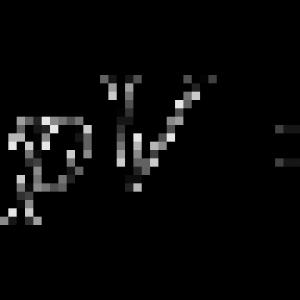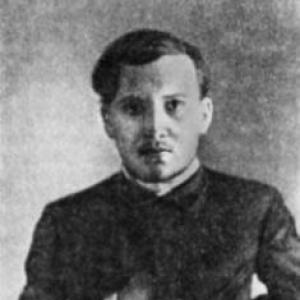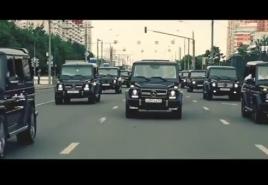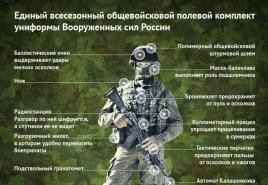The accused of murdering a schoolboy in the Chelyabinsk region Argent for the fact that he was raped in prison. "When drank, I did a lot of nonsense"
On July 11, Vanya was buried in Kaslyakh - a boy, who was looking for the whole city for almost a month. Now we already know that all 25 days of desperate search and hopes of Vanya were not alive, and the body rested on the garden next to his home.
Song with Vanya came the whole city: hardly every family took the tragedy as her.
Vanya can not be loved - open, kind, cheerful boy. He was friends with everyone, I easily found mutual language, "says the familiar family of Alevtina Beketov.
This goat was necessary to baw in and cut into pieces, how he did it with Vanya. It is a pity that he was immediately taken to prison, - a 16-year-old teenager cursed through his teeth. The old woman does not even wander the grandson, she also believes. Everyone is eager for everyone.
"Vanya, let's not long!"
Today the next picture of the tragedy is evaporated. On June 14, the quarter-grader Vanya left the house by bike to the library. He needed to get textbooks for the fifth grade.
Vanya, let's not be back there and back. I'm waiting for you, "Mom shouted.
Vanya turned to the main street and moved towards the canal. After about 200 meters from the gate of a neighbor house, a young man appeared. Vanya saw him before - smiling, friendly uncle. Only that day he was tightly drunk.
Let's go drink tea, - he suggested the boy.
Vanya refused, referring to what hurry. But the shredder raged the child on the way back.
I hit four times with an ax with a head on my head, dismembered and buried in the garden, "the child's grandmother has told the terrible details.
Mobile disconnected near the killer house
The boy's bike killer threw into the car and threw out outside the city, disassembled on the part ... and then began to carefully follow the search for Vanya. His, as well as all previously convicted, investigators were checked on a polygraph. But the results did not immediately.
Already when search engines stopped work, sighing 200 km of forests and fields, criminalist experts reported that the nerve fluctuations were noticed on the detector of lies of one of the locals - 29-year-old Andrei S., three times convicted of theft, robbery and drugs.
As the source close to the consequence told Andrei, another detail spoke against Andrei: the detectives requested cellular data and found out that the Vanya phone stopped serving signals near the house where the suspect was died. After a couple of days, the man was detained, and he gave confessions, saying where the child hidden.
"When drank, I did a lot of nonsense"
The detainee is a worker from Ozersk with three pastries. On a page in social networks - a smiling guy, surrounded by a cheerful company.
I personally familiar with Andrei and news that he is a killer, has become a shock for me. He was good manSimple in communication, despised killers and rapists - we talked a lot about it. Could not pass by, if someone is offended. But the prison has greatly changed his worldview, he began to drink a lot and under the action of alcohol became not his own, did a lot of nonsense. He understood it and often said: "I can not drink, I do not know what you are doing." I wanted to coded many times, but my friends-drinking companions were always discussed, "said the former colleague Stanislav Venenko.
On the day of the murder, the man was also pumped by alcohol and with difficulty motivated his act: "I don't remember anything." However, there is a reason.
We told investigators that during the last rejection of him raped. It broke his psyche, and he decided to take revenge on his humiliation. The victim was our Vanya, "said the Komsomolskaya Pravda newspaper - Chelyabinsk" Grandma of the boy.
"Nehorish" house threw the owners
What did he do in Castles? He stayed at a friend who lived in a private house along with a blind mom. Local residents know this family badly. They say they moved here quite recently and the friendship did not drive anyone.
It seems to me that this lady knew everything, but Andrei stood her. Because it is impossible in your home and in your garden not to notice the body of a person, - the old woman is shimmer.
Now the "bad" house is closed on the barn castle, the perimeters lie bouquets of field daisies - this local residents Take flowers. The owners left and, most likely, will not return - otherwise people will ruin into pieces. The accused himself sits in the SIZO, there is an investigation. And cats ...
They are not going to leave anywhere. Will be living here. Vanya is buried here. And let those who did it, "the relative of the family of the child Sergey Yasine says.
The details of the shooting of Ivan Lushnikov became known.
The case on the execution of the "looking" in Kopeysk Ivan Lushnikov, who perfect today among the day, becomes in detail. So far, law enforcement agencies report missing official information about the incident, the sources in the police are divided by interesting nuances.
So, the interlocutor of Interfax said that, according to preliminary information, there were two killers.
"They shot, driving past at home on a moped. Now this version is checked, "the agency's source said.
As previously wrote "Criminal Russia", the incident occurred in the afternoon near the Lushnikov cottage in the village of Bazhovo. Ivan Lushnikov, together with her father, unloaded a car when unknowns opened fire on them. According to eyewitnesses, they first sounded a few single shots, then the series. As a result of the attack, Ivan Lushnikov died in place, his father was hospitalized. Now he is in intensive care.
According to Znak.com, the 38-year-old Ivan Lushnikov was previously repeatedly judged. He was convicted of theft, robbery, robbery and illegal storage of weapons. According to sources, the man was freed from the seats of imprisonment three years ago. According to unofficial data, he oversaw Kopeisk's retail markets and was "looking" around the city. Some neighbors Lushnikov call him a "local bandit", others talk about his goodness and politeness. The network edition of "74.ru" found out that a man moved along with his family to Bazhovo around one and a half years ago. Lushnikov continued to build a house, and it was often seen in the same store building materials in Kopeisk. A killed man remained a spouse and daughter of adolescence.
In the place of the incident, the investigative-operational groups still work, the head of the investigative department of SC on Kopeysk, Head of the State Ministry of Internal Affairs in the Chelyabinsk Region, was left, and Andrei Sergeev. The wrestling of criminals is underway.
In fact, the investigating authorities opened a criminal case under Part 1 of Art. 105 and part 3 Art. 30, p. "A" Part 2 of Art. 105 of the Criminal Code of the Russian Federation - murder and attempts to kill two persons.
The journalists who arrived at the crime scene reported that expensive foreign cars came to the house of the murdered. Thus, Porsche Cayenne was noticed with a number 999 and the Volkswagen SUV, the driver of which asked the press does not remove the territory of the incident.
Recall, in December 2014, another "watching" on Kopeysk, 40-year-old Peter Pankov was killed. The man was shot near his own house when he walked to his car. Killer disappeared from the crime scene by car. The murder of law enforcement officers never found.





Brief history of S.Lushniki. "But how was the life of life once! With the hum of technology, weddings and christening. Fought with enemies and again took and work, and weddings to protect with loved ones!" Eduard Asadov. "Place a monument to the village on Red Square in Moscow!" Lushnikov village, village Lushnikovo, Lushnikov village ... The name of our village, according to the stories of old-timers, there was a person on the name of Lushnikov, settled one of the first on the banks of the River Nizhny Suzun, and there are three more rivers: a lot of muscles, birch and heater. Rivers, replete with fish, forest - a beast and a bird, a blatant land attracted the attention of the peasants, but Russian in our regions appeared in the 16th century. But when did our village arose? I think that no one will say the exact date, because different sources indicate different dates of education: the episodes of the history of the Suzunsky district, the date of the foundation-1526. settlements, both runaway peasants from the European part of Russia and the first Namelnikov-Chaldonov (man from Don); The Siberian Soviet Encyclopedia indicates that the village is based in 1716; In the State Archive Altai Region and the central state archive of the ancient acts of the USSR The date of the foundation of the S.Lushnikov - 1770s. After the defeat of the Kerzhen Skits in 1720, the Old Believers, or, as they were called here - Kerzhaki, went to Siberia, hiding from persecution. By the way, when the house was built, they collected a lot, this is a Kerzhatsky word. From 1754 The state program for the resettlement of peasants began to operate, they were paid lifting. So the first "rakeys" appeared (so they called the indigenous people of Siberia) settlers. And from the same year, Siberia has become the official place of the sign of the convicts. The official date is considered to be 1891. But with this you can argue on the basis of the preserved documents. For example: the document is preserved in which it was indicated that in 1780-1781. In the vicinity of the village of Lushnikovskaya, on the River Nizhny Suzun, Perezanne Andrei, the office servant of the Suzun copper-smelting plant opened the Iron Rudge deposit, after that in 1782. The village was attributed by a decree to the Nizhne-Suzun plant - the state archive of the Altai Territory. In general, the history of the emergence of Siberian villages is very interesting because their organization belongs exclusively to the peasants. 1-2-3 families settled, and then relatives came to them, familiar or moved from other villages. To leave the village, it was necessary to take the "dismissal" or "vacation", and at the new place of residence, "receiving testimony". So the document "Vacation" was preserved for 1781: "The villages of Lushnikova below appeared the peasants we declare that the village of Peaceanin Vasily Shamanaeva Baigan Lands against the previous times of the fetus do not bring and the Scott release is very removed. And for resettlement to the village of Firnev We let go. " Big role In the resettlement of peasants with the falling frontiers of Russia, agricultural reform 1861 was played. The "Raisi" migrants (second wave) were poured in a large stream to Siberia. The census of the beginning of the 80s is 18 century, Lushnikova referred to the department of the Berdy Ostrog, but already in 1782. Departed to the Altai province. In 1919 The provincial Zemstvo Collection administered to the province on the counties and parish. Our village Lushnikov was part of the stone county, but by the decision of the Altai lips. The rank of 11.06. 1920 Kamensky County is divided by nine areas, so our already village Lushnikovo, departed 11.12.1924. in the bitsky district. It was 44 settlements (33269 people); 8 schools (680 students); 19 teachers, in January-March 1925. - 33482 people, and by autumn already 10 schools. In 1932.03.02. Suzunsky district united with the Bitkovsky district, the Lushnikovsky district was formed, but 10.12.1932. The district center was the Suzun-Plant renamed R.P. Suzun. In those years, the population of the district was 70181 people, there were 128 villages. Undressing 2010, 32590 people live and there are only 42 villages. The villages mostly small and lucky those villages, where he managed the smart host, which, despite the difficult times of the 90s, retained people and peasant economy. But often drunkenness and laziness flourishes in the villages. Non-promoters inspire that this is our Russian character trait, but our story talks about the opposite - our ancestors were trumpety and never encouraged drunkenness. How did the peasants live in 18-19VV.? Many who have observed the life of Siberian-Remote, parish priests, etc. emphasized the exceptional commitment to work. Inheritance, hardworking for the peasants was closely connected with the crudeness, the condemnation of the "motion", drunkenness. Rustic public opinion Family facilitated, in which the spirit reigned the spirit of consent, mutual respect and care. And according to the law, and in the relevant life of the head of the family was the husband. The wife must be "obedient," to keep the economy. Many preserved dates that surprising purity and tidiness were maintained in peasant homes. So, for example, P.Sholdin wrote: "Observing the purity and tidiness that constitutes one of the conditions External life, they climbing in the baths every week and more often -eople families together, without the difference in sex and age, so it is hot that you are out of the bath, or falls into the snow, or go on a hole, or in frost and, despite the crackle Mois, wash up to the point that the hair is frozen, and the body becomes a bugger ... "The culinary abilities of Sibiryachk were also noted:" while the Russian woman is positively easy to make any human lunch, Sibiryachka knows many secrets Pure peasant work. Plans to large media in the choice of raw materials serving food, she learned better stove bread, cook and fry meat and prepare milk preducks ... in Siberian The village is able to make many types of cookies, are well treated with pickles and know how some things to prepare the future. " So I wrote about the sibrics of N. Petropavlovsky in 19V. It was impossible to apply physical violence to it (except for the decision of a worldly gathering), if the husband turned to his wife, he could have fallen into a community court or in the parish. But her husband, if the wife did not "Rada" for a household , I could complain about her. The joint court made a decision or to accommodate a wife or husband (beating rods) or, if it did not help, allowed them to live separately, i.e. Divorced, especially if one of the spouses is seen in the "breakfast". In cases of approval of someone, the community was usually indicated: "Do not plow, not the ILO, not a drunkard, nothing is suspicious and dear to the bombard." In most cases, husbands treated their wives with respect and care. Children to peasant labor were committed to early age : The boys have already studied to ride the riding and drove horses at the stage, at 7-8 years old, they participated in the processing of arable land, and the labor education of boys was charged with the duty of the Father, senior brothers or relatives, if in the family there were no adult men. The whole was on the proceedings of the mother, absorbing all the skills necessary for the future hostess. Father and mother were instilled and moral as a respectful attitude towards the old family members, relatives, neighbors. Parents and initial education of their children paid attention to, but in the "arranged" school gave the sons reluctantly, to mainly read and write children taught the "free teachers", because they noticed that the "learned" literacy is distinguished from peasant work. But, after all, Kravyad S.I. Glyaev (he came to Suzun to the Nikolskaya Fair) in his letter, which he sent to Petersburg I.I. Szreznevsky noted: "... that in the territory of many competent people, especially peasants who adhere to the faith of the Father's Customs, are Vintage books and manuscripts ... "And according to the law, and according to custom, children should have loved and read the father and mother, and parents had a certain power over the children, they could punish their children, but not cruelly. When the children have grown, the sons brought his wife to his parents' house, so there were several families under one roof, there were a lot of peasant labor, and they watched grandmothers for children, but even they worked: they went wildly, tibes, knitted. When the son wanted to separate He made a share from the general farm if he did not agree with the section, could file a complaint to the "world" or "society" -Adnation of peasant families, at the head of such a "society" stood the older, which was chosen at the rural approach. The competence of the gathering included almost all socially significant questions: the intercresan relations were governed, they defended the interests of the peasants from the onset of the volost chiefs, "accountants" were chosen. The layout and collection of feeds from the peasants was made with the participation of the gathering, and the "accounting" was checked in order not to abuse. The correctness of the expenditure of the amounts collected from the villagers to the Intramir needs was also checked. So this money was built in 1914. Temple of the Holy Library Trinity. In the 20s of the last century, 1368 people were parishioners. In different years, the temple served priests: Grigory Shevlyagin (1913-?); Vasily Vdovin (1920s); John Ponomarev (1926-1929); Archpriest Maxim Gorchakov from 18. 02.1932g. The official decree on the closure of the temple was released in 1935. But only 12/29/1940. Rural Council made a decision: "... because the church of the station IT is neglect, convey the premises for the cultural premises, and the wagon-like firewood in the medical center." At first there was a school, then there was a club, now from the temple there was only a fun. After the revolution 1917. The first rural council was organized, the activist was Levin Platon Semenovich. He was shot by the Kolchakov punitive detachment of the Cossacks. The detachment went with the ranks of St. Petersburg, so far this way is called "Cossack". Unfortunately, there are no documents in our archive, but the memories of our fellow villagers remained. Kolchak's punishers were shot and hanging, rugs rugs, peasant farms. Throughout Siberia, the peasants went to the partisans. And in our village, the detachment was also organized, they went to the forest, lived in dugouts, but when the Cossacks came, they were betrayed and almost all the parshans were shot in front of the whole village. According to the stories about 20 people. Number at night, secretly, because The punishers were forbidden to touch them, everyone was buried and buried. And then I had to arrange the daughters of the traitor to organize the secret, the night funeral of their father, because the villagers arranged Samosud. She struggled him behind the river and instead of the cross laid a stone. Martyrdom took Boris from the hands of karatets and Turratov, he was not a guerrilla, he just did not want to give his horses. He was taken to with. Bobrovka, brutally beaten, and then, running, barely thrown out of the window to frost, freeze. The cover of the fur coat, the villagers were brought to the village on the sleigh. Here is the names of the partisans who shot the punishers. Excuse that they remembered neither all. Arbuzov Frol Palagin Alexander Palagin Maxim Pankin Artemy Filatov Yakov Savin Frol Levin Plato Pankin Ivan (or Fedor) But the redhead Andrei Martynovich, Zhrush Kondratiya, Filat Arin was lucky - they were alive. After the defeat of Kolchak in 1919, the village was celebrated every year the day of the slicer's overthrow. In the 20s, our village was large, the population for 1926. Compiled 2467 people (Siberian Soviet Encyclopedia -1929g.). Therefore, when we started to create a sense council, the village was divided into 11 sections. In general, in those years, all the power belonged to the village council, he was obeyed by a school, and hospital, and agricultural artel, and later collective farms. The division of the Board with / C and the Board of the collective farm took place only 17,10.1957. The Board with \\ C included 11 people, because The village was divided into 11 sites and every legal fellow answered his site. He led the disclaiming work among the population, revealed the poor and bathers to help them with food bread. In the 20s, the issue of bakery was particularly acutely acutely stood, all the surplus of bread were withdrawn, leaving the minimum of grain in the family, even the guys who went to the army should have donated their share. Extract from the protocol of the Assembly of 12.02.1928, there were 1550 people of the adult population with the right to vote: "The entire harvested product to transport to Art. Cherepanovo on voluntary starts by export, and malicious, i.e. evaded to write on the black board. All Prepared bikerodukt output no later than 18.02. 1928 Repressive methods were applied to the malicious "bolder" - they were taxed with five times. Self-definition. For each tax ruble 10-20% of cash, the villagers should have been deposited in cash with \\ s, and this money went to the needs of the village. So on these money The funds were built three bridges in 1928. h \\ p Minema, R. Suzun and on S.Sershovo, and in 1930.- Bridge h \\ p Berezovka, Kamenka. . In 1928 The oil refurbishment was built (oil-car), milk from S. Bedrino, S. Boltovo, S.Mrydanka, P. Sunny Beam. Built in S.Lushniki oil-artel because there was a building stone and the quality of milk was considered the best. 11/21/1928 Konovalov Ivan Mikhailovich and Zhob Nikita allowed to build water mills. In December 1929 A poultry artel is formed. In addition, there were four agarters in the village (brigades) of Br. 1 "BR.2- angle, BR.3-Surian, BR4-Baraba. Those who did not want to enter the agricultural workers were the sole farm, there were about 65 such hosts. In addition to self-defense in voluntary and compulsory, the peasants had to pass funds to the state labor savings ticket office. But in the first place in importance - bakery. If discounts were made by the poor and barracks, and even the seeds were given to the sowing, the plates and the "rigorous" plan were raised and for the breakdown of the plan could have the right to vote in elections. Deprived the rights of the votes of "merchants, exploiters of the wired strength, exploiters from the machines, priests." And, if the head of the family was deprived of the right to vote, all family members were automatically lost and the parents, children, grandchildren. In our village from 1924 to 1930. There were such 19 families (64 people). But, despite the difficulties, the village was considered strong and rich, in July 1929. North-Caucasian delegation came, see how Siberian peasants live. And the Siberian peasants - fists and "fash-chain" begin to experience problems - in March 1929. The fights of Kulaca thought. A good-quality houses are selected, in return giving a small hut, the agricultural machines are selected, referred to Magadan. Some men themselves leave for Novosibirsk, and then, at night, secretly visited their families. And in January 1930 Collectivization began. At the occasion of the Board C \\ C 15.01.1930. It was decided to: "Collectivization should be carried out and desirable to record in the collective host." 8 people were recorded by 8 people: Ivan Voronkov, Ulyanov Timofey, Usov Fedor, Utkin Vasily, Filatov Egor, Kulikov Peter, Ulyanov Peter, Shelyakin Egor. Already by January 25, 1930. It was written in the collective farm, when the gather gathered on this day, there were also 281 collective farmers. Protocol Meeting №1. We decided to call our collective farm "The path of socialism" and chose a new board. In C \\ from Collectze: Usov Ivan Mikhailovich, Kozin Pavel Timofeevich, Shelyakin Egor Nikolaevich, Sakov Fekla, Petr, Kacheva Vera, Iconnikov Fyodor Vasilyevich. Candidates for them: Ulyanov Timofey, Ivanushkin Ephraim, Utkin Vasily, Voronkov Ivan. The Chairman of the collective farm was chosen by Kozina Paul Ti-Mofeevich, a candidate for him-Iconnikova Fyodor Vasilyevich. Audit Commission (verification of the results of financial and economic activities): CHAIRMANS OF MACHINES IVAN, PLANS-PLANS Egor, Volkov Taras and Canditata -Ratiki Andrei, Kozin Timofey. Estimated Commission (assessment of property and cattle accounting): First Commission: Kurochkin Ivan, Philants Timofey, Vorkunkov Fedot, Kozin Karp, Red Ivan. Senior -Korroskin Ivan. Second Commission: Voronkov Ivan, Usov Egor, Trischin Konstantin, Kulikov Peter, Kozin Alexei. Senior -Voronkov Ivan. Since the collective farm was recorded mainly poor and bathers, which were hungry in those years, the first decision of the Board was the introduction of norms for products.







